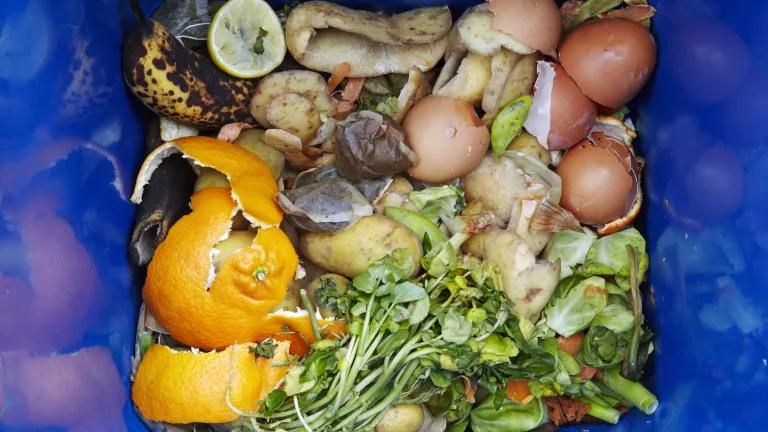Sustainable America recently published a poll about American attitudes on food and fuel.
Overall, numbers from this poll showed higher sensitivity and better practices around food waste than any that I’ve seen before. One might write that off to polling differences, but I’m going to be optimistic and say we’re getting somewhere! It also provides some insight into what we Americans are and are not doing in our kitchens, and how we’d like the businesses we frequent to help us out. Here are a few of my takeaways from looking at the numbers.
We are aware of how much we throw out. Though general wisdom says people underestimate their own waste, respondents’ estimates of how much food gets wasted both across the country and in their own homes were right on track with other numbers I’ve seen –the average estimates were 41 percent across the country and 18 percent in their own homes.
Those over 65 thought they wasted far less than those in younger age groups – 10 percent as compared with 25 percent in the 25-29 age group, for instance. I believe them, since they also reported practicing many of the standard food-saving techniques in their own kitchens more than younger folks. Eighty percent of people over 65 were likely to freeze food for later use and 76 percent would use leftovers as ingredients in future meals, whereas only about 60 percent of the 30-34 age group were likely to do these things.[i]
General concern over how much food is wasted has grown, with 27 percent of respondents more concerned over wasted food this year than they were last year. Why? Not surprisingly, saving money seems to be the key thing on everyone’s mind. When asked what, if anything, they regret about throwing food away, 80 percent of people cited wasting money, while only about half felt bad that other people were hungry, and a mere 20 percent were worried about the waste of resources necessary to grow that food. In fact, just as many people regretted having a disorganized fridge as the environmental consequences of wasting food. Perhaps they’re not aware that throwing away just one hamburger is equivalent to taking a 90 minute shower in its water use! They were, however, aware of hunger, with 6 in 10 people Americans personally knowing someone who recently struggled to afford food.
Respondents to this poll showed more promising habits related to food waste than other polls I’ve seen in the past. For instance, a full 77 percent of respondents take their leftovers home from restaurants. Good work, folks! You must all like cold Chinese for breakfast as much as I do. Not nearly as many people were duped by the myth of expiration dates as other data I’ve seen: only 26 percent reported throwing food out on or before expiration dates, whereas a 2011 poll by the Food Marketing Institute had over 60 percent of people reporting they do this. (Note: it’s hard to say how much of this is due to how the questions were framed versus actual change in behavior.)
People also reported freezing food, using up their leftovers at home, carefully planning shopping lists as actions they are taking to reduce the amount of wasted food. If you’re interested in learning more about these and other tips, check out NRDC’s Food Waste Fact Sheet.
Finally, there was some interest in seeing grocery stores help consumers in their quest to throw less food out in a variety of ways. Almost 50 percent of respondents would like their grocery stores to offer certain foods in smaller quantities. (This was especially true for those over 65, for whom almost 70 percent were interested.) About 40 percent could do away with the Buy-One-Get-One-Free promotions in favor of product discounts or other alternative promotions, and 30 percent would like more bulk bins in stores that allow them to purchase food in just the quantities they need. This is not that surprising, when you consider that increased awareness of food waste in the United Kingdom has brought a strong business case for grocery stores to help consumers reduce waste in their homes.
Overall, good news! Though plenty of work still to be done, awareness is the first step, and I’m glad to see it increasing.
[i] Note: The survey of 1,000 registered voters is statistically valid for the full set of people. When looking at specific age-groups, the sample sizes were not large enough to be conclusive, but do give a directional sense of different attitudes and behavior among different demographic groups.



